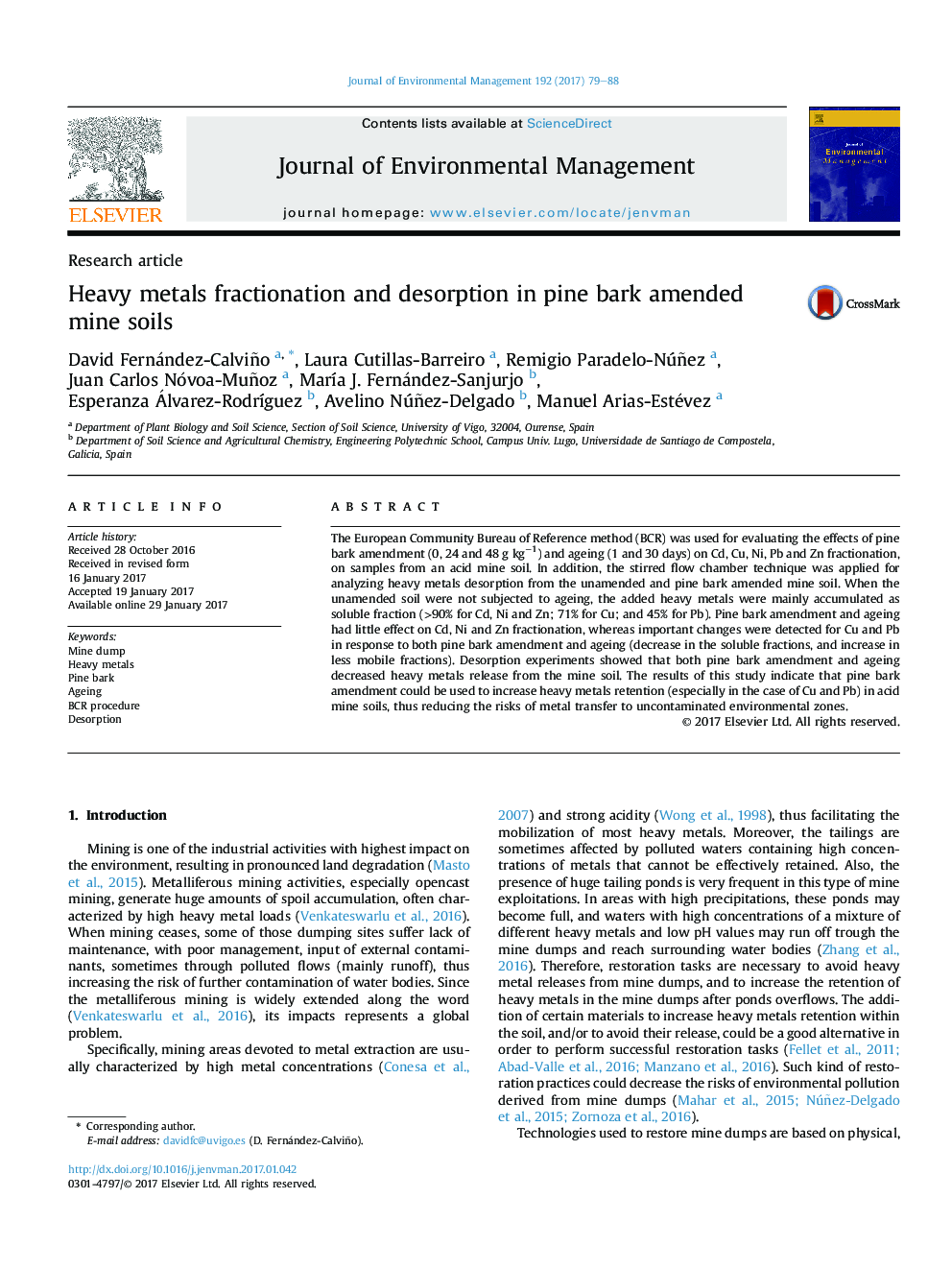| Article ID | Journal | Published Year | Pages | File Type |
|---|---|---|---|---|
| 5117029 | Journal of Environmental Management | 2017 | 10 Pages |
â¢An acid soil spiked in the laboratory with Cd, Cu, Ni, Pb and Zn was evaluated.â¢Pine bark reduced the soluble fraction for Pb and Cu, but not for Cd, Ni and Zn.â¢With time, soluble fraction for Pb and Cu decreased, but marginally for Cd, Ni and Zn.â¢Both, pine bark amendment and ageing decreased all heavy metals release from the soil.
The European Community Bureau of Reference method (BCR) was used for evaluating the effects of pine bark amendment (0, 24 and 48 g kgâ1) and ageing (1 and 30 days) on Cd, Cu, Ni, Pb and Zn fractionation, on samples from an acid mine soil. In addition, the stirred flow chamber technique was applied for analyzing heavy metals desorption from the unamended and pine bark amended mine soil. When the unamended soil were not subjected to ageing, the added heavy metals were mainly accumulated as soluble fraction (>90% for Cd, Ni and Zn; 71% for Cu; and 45% for Pb). Pine bark amendment and ageing had little effect on Cd, Ni and Zn fractionation, whereas important changes were detected for Cu and Pb in response to both pine bark amendment and ageing (decrease in the soluble fractions, and increase in less mobile fractions). Desorption experiments showed that both pine bark amendment and ageing decreased heavy metals release from the mine soil. The results of this study indicate that pine bark amendment could be used to increase heavy metals retention (especially in the case of Cu and Pb) in acid mine soils, thus reducing the risks of metal transfer to uncontaminated environmental zones.
